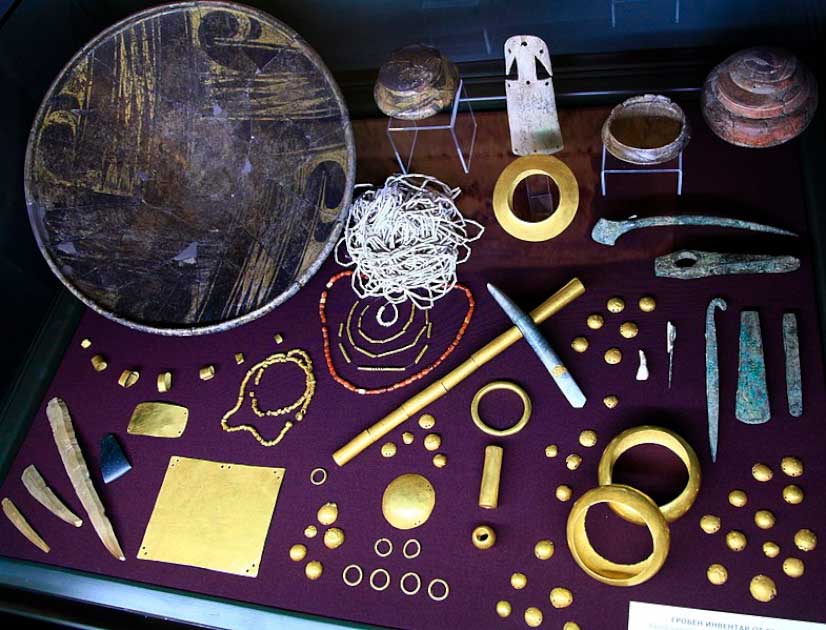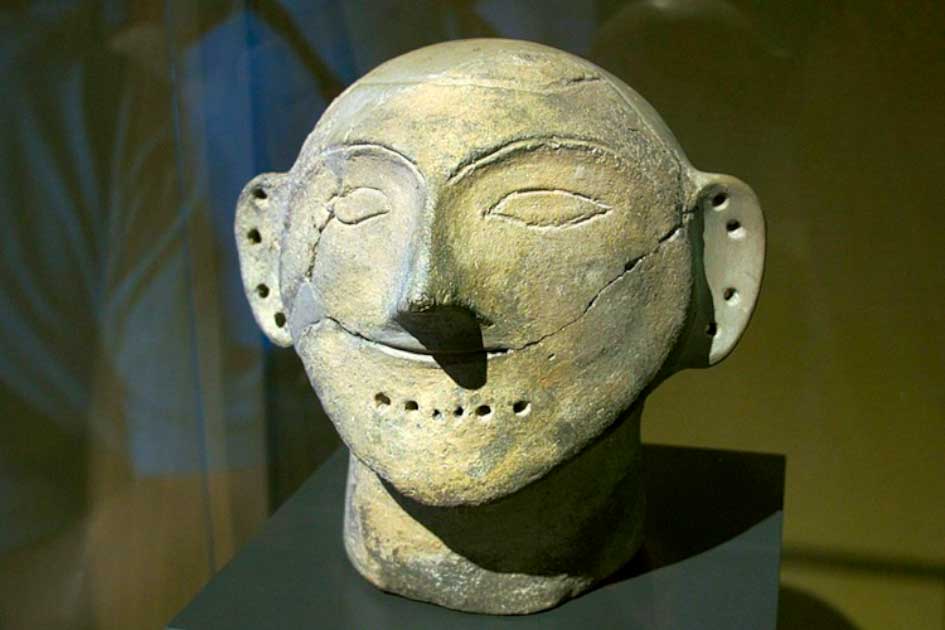Gold is a special material, and for much of human history it seems we have known this. Extremely unreactive and resistant to corrosion, this easily worked and scarce material has been recognized as something special, something different, for millennia.
We may have left the gold standard but our currencies revolve around its worth and many countries still maintain a stockpile of gold bullion. Our electronics use it, and we still decorate ourselves with it. There are few elements that capture the human imagination like gold. Of course, this has been true for a long time.
And thanks to an archaeological discovery from the 1970s we know how long humans have been obsessed with gold. When the Varna Necropolis was discovered it not just changed our understanding of early goldsmithing, but it introduced us to an early European civilization we never realized had even existed.
What is the Varna Necropolis?
The Varna Necropolis (also known as the Varna Cemetery) can be found in the western industrial zone of Varna (the third largest city in Bulgaria). It is widely known in archaeological circles as one of the world’s key prehistory sites, and by almost any standards it is impossibly old.

The site dates from 4,600 BC, more than a millennia before the rise of dynastic Egypt, the oldest of the great Old World civilizations. It seems that gold working came out of the mists of time, received wisdom even to the first pharaohs.
As is so often the case this astounding discovery was only unearthed by mistake. The site was first discovered in 1972 by an excavator operator named Raycho Marinov. Marinov knew he had discovered something but had no idea as to what. He and the locals approached Dimitar Zlatarski, the founder of the Dalgopol Historical Museum.
- The Lost Mine of Ophir and King Solomon’s Gold
- Catacombs of San Gennaro: Ancient Site of Worship and Burial
Dimitar quickly realized the importance of what had been found and contacted the Varna Historical Museum. He handed over the research of the site to Mihail Lazarov and Ivan Ivanov. These two then began properly researching the site and launched major excavations.
What these excavations unearthed was astounding.
What Was Found?
As of now, around 300 graves have been unearthed since 1972. In these graves over 22,000 priceless artifacts have been uncovered. Over 3000 of these items are made from gold. Altogether the gold weighs in at over 6kg (13 lbs) in total. Besides the (literal) wealth of gold other precious relics such as copper, flint tools, jewelry, pottery, obsidian blades, and beads have been found at the site.
One particular grave stood out from the rest, however. Inside grave 43, archeologists found the final resting place of a particularly high-ranking male. It is believed he was a leader or ruler of the Ancient Varna Civilization. His single grave held more gold than the rest of the entire world combined during his period, and it was hoped that this grave might answer some of the questions about who these people were.
While not much was known at the time of his unearthing about ancient Varna, historians were able to confidently conclude that he was a ruler. This was thanks to the fact he was buried with a scepter (a signifier of high rank or spiritual power in many early civilizations) as well as the large amount of gold he was found with. If he wasn’t a king, he was as rich as one.
Unsurprisingly upon its discovery, there was much excitement about how much gold the Varna Necropolis held. But the site’s true wealth is in what it has taught us about the Ancient Varna civilization.
Today we know that although long lost to time the Varna culture was not some small, unimportant footnote in history. Instead, it was, for its time, an incredibly advanced civilization that predated the empires that are considered today to be from the “dawn” of history, those of Mesopotamia and Egypt.
From the necropolis we know that goldsmithing first started in Varna between 4600 and 4200 BC, making it the first known civilization to work with gold. Their craftsmen quickly became masters of metallurgy, and the civilization flourished on the back of their skill and craftsmanship.
Gold gave the people of Varna something valuable to trade. This led to increased communications with their neighbors and ultimately opened up trade routes in both the Black Sea region and the Mediterranean. The influx of wealth from these trades created societal change in Varna. A societal gap emerged with the wealthy metallurgists at the top, followed by merchants, and farmers at the bottom.

The gold found at the Varna Necropolis helped tell the story of how a small, bronze-age civilization became a cultural powerhouse that controlled vast swaths of Europe for thousands of years, becoming the cradle of civilization in Europe.
The burial rites uncovered at Varna also helped teach us about broader societal changes occurring during the period. Earlier only the graves of women and children were given importance and men’s graves tended to be bare and simple.
Yet at the Varna Necropolis, the opposite is true. The men’s graves are the most decorated. This points to the rise of the patriarchal society, a society ruled by men. Perhaps this is the first evidence of a shift in social norms, away from a family structure towards the male-dominated society which was to become the norm for millennia to come.
A Chance Find with a Lasting Legacy
The Varna Necropolis is a great example of how important accidental discoveries have been over the years. One excavator’s accidental find uncovered a previously unknown superpower. A superpower that as it turns out shaped the early history of Europe.
It also taught us that humans had been working with gold much earlier than believed before. The civilization of Varna largely grew and gained power through its gold trade. They are the first example of a nation becoming an economic powerhouse through the utilization of gold. They may well have also been one of the first patriarchal powers.
If you work out the value of all the gold found at Varna so far it comes in at around $300,000, nothing to be sneezed at but not terribly impressive in the grand scheme of things. Yet the site’s true value can’t be measured in monetary terms as what it has given us is priceless- a window into our shared past.
Top Image: Old school bling from the Varna goldsmiths: Grave 43 contained more worked gold that the rest of the world combined at that time. Source: Gabriele Burchielli / CC BY 2.0.